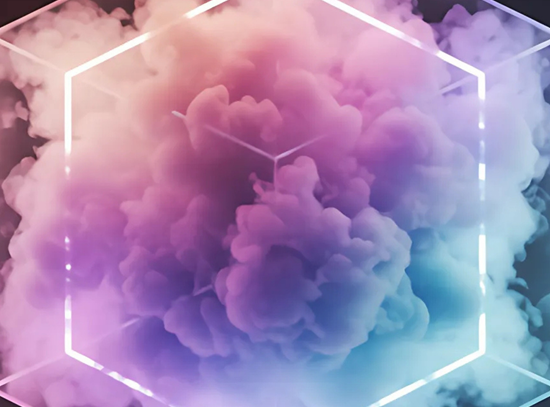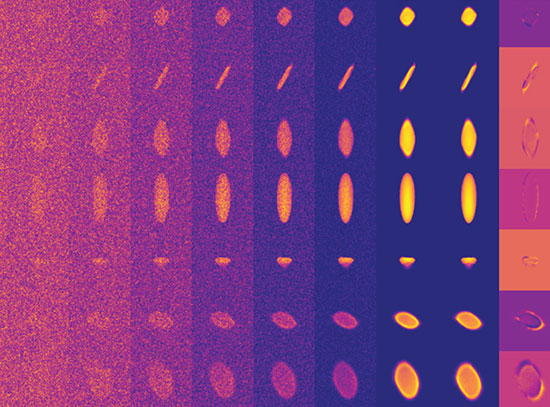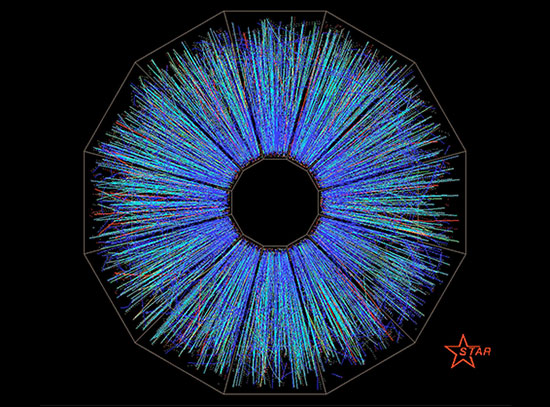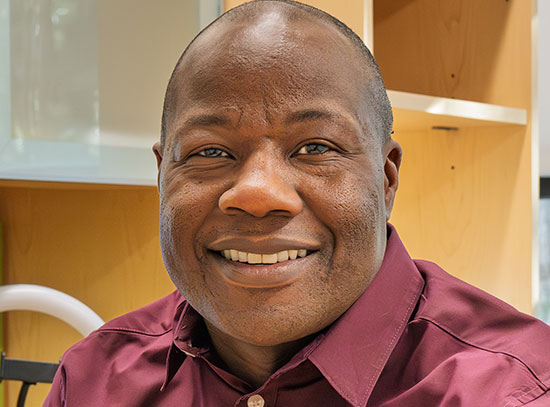Students Explore Safety of Space Travel at Brookhaven Lab
June 14, 2006
Contact: Dennis Tartaglia, Emily Voelker, Kelly Peterson, (212) 481-7000 or Karen McNulty Walsh, 631 344-8350, kmcnulty@bnl.gov.
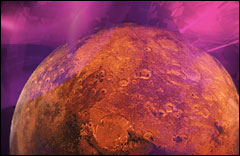
UPTON, NY - Students and scientists from Baltimore to Bedford Park, Australia, are now participating in the third annual NASA Summer Student Program at the U.S. Department of Energy's Brookhaven National Laboratory. Working in Brookhaven Lab's Medical Department and the NASA Space Radiation Laboratory (NSRL) - a unique facility that simulates the harsh radiation environment of outer space - the group will study the possible risks astronauts may face during future long-term space flights.
With potential missions to Mars, exploration of near-Earth asteroids, and long-term moon missions, astronauts are expected to spend more and more time in deep space travel. Yet the risks associated with this travel are not fully understood. It is vitally important to learn how human space travelers will be affected by the harsh environment of space and how best to protect people in space from harm.
This scientific challenge will be examined by the group of 15 graduate students, post-doctoral fellows, and working scientists participating in the program (see participant list). Sponsored by NASA and organized and managed by Brookhaven Lab, Loma Linda University Medical Center, and Universities Space Research Association (a consortium of universities, research organizations, and governmental groups involved in space research), the program is designed to provide a "pipeline" of researchers for the nascent field of space radiobiology. The intensive three-week residential program began June 8.
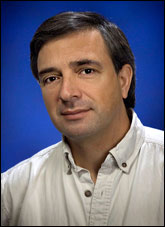
Marcelo Vazquez
"It is critical that we uncover the risks of radiation to space travelers and develop countermeasures that allow the safe, long-term presence of human beings in deep space," explained Marcelo E. Vazquez, a medical scientist at Brookhaven Lab who co-directs the NASA Summer Student Program with Gregory Nelson of Loma Linda University. "By hosting this program we ensure the development of scientists who are dedicated to this field and are best able to find answers to these difficult questions."
Studies at NSRL focus on how this radiation can damage the central nervous system and other bodily systems, as well as how the intense rays may promote the development of cancer. NSRL researchers are also looking at ways to protect against these dangers through shielding and other strategies to minimize the risk to space travelers.
"Our students this year come from diverse educational backgrounds and from all over the world," said Vazquez. "Each year we hope and expect that many completing this program will go on to conduct additional experiments at NSRL." Vazquez serves as Brookhaven Lab's experimental liaison in the Medical Department for the NSRL research program and is also the National Space Biomedical Research Institute/NASA Space Radiation Liaison.
The summer program brings together biological and physical scientists to work jointly on leading problems in space radiobiology. Students participate in both classroom activities and scientific experiments, working side-by-side with top space scientists from research organizations such as NASA, Brookhaven Lab, Loma Linda University, Columbia University, University of Pennsylvania, Tufts University, and University of California, San Francisco. Experimental creativity and interdisciplinary approaches are emphasized.
"We continuously seek emerging scientists who will be able to learn and apply the techniques necessary in the complex field of space radiation," said Vazquez. "We have high hopes that each of our students will go on to make a big impact in this growing field."
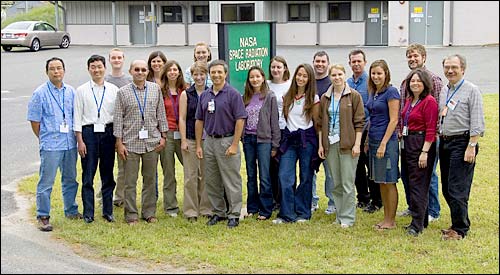 enlarge
enlarge
(L to R) Tomoyuki Mashimo; Burong Hu; Benjamin Blyth; Jaroslaw Dziegielewski; Mary Van Baalen (Mentor, NASA); Veronica Zaconte; Sara Zwart (Mentor, NASA); Brooke Anderson; Marcelo Vazquez, (Brookhaven National Laboratory, Co-director, NASA Summer Student Program); Mitsuko "Lynn" Yamamoto; Jennifer Anderson; Diana Pignalosa; Alex Redd; Alena Mozhaeva; Peter Grabham; Courtney Harrision; Richard Hatcher; Rachel Casey; and Gregory Nelson (Loma Linda University, Co-Director of NASA Summer Student Program). Click image to download hi-res version.
NSRL is a $34-million facility that was built by the staff of Brookhaven Lab with funding from NASA with the cooperation of the Office of Nuclear Physics within the U.S. Department of Energy's Office of Science. Operational since 2003, NSRL is one of the few places in the world that can simulate the harsh cosmic and solar radiation found in space. The facility is part of Brookhaven's Collider-Accelerator complex, which is maintained by the DOE Office of Science's nuclear physics program and receives incremental operations and maintenance funding from NASA. It employs beams of heavy ions extracted from Brookhaven's Booster accelerator that are the best in the U.S. for studying the effects of radiation on living organisms. Scientists from more than 20 research institutions from throughout the U.S. and abroad work year-round at NSRL, supported mainly by NASA funding, to learn about the possible risks to space explorers exposed to deep-space radiation.
Contact us if you would like us to try to arrange a photo of a particular individual student or group. Students will be at Brookhaven until June 29.
For information on NASA Summer Student Program sponsors, please visit www.nasa.gov (NASA), www.usra.edu Universities Space Research Association), and www.llu.edu (Loma Linda University Medical Center).
Note to local editors: Marcelo Vazquez is a resident of Huntington, New York.
2006-10505 | INT/EXT | Newsroom





